Linz cruise port guide
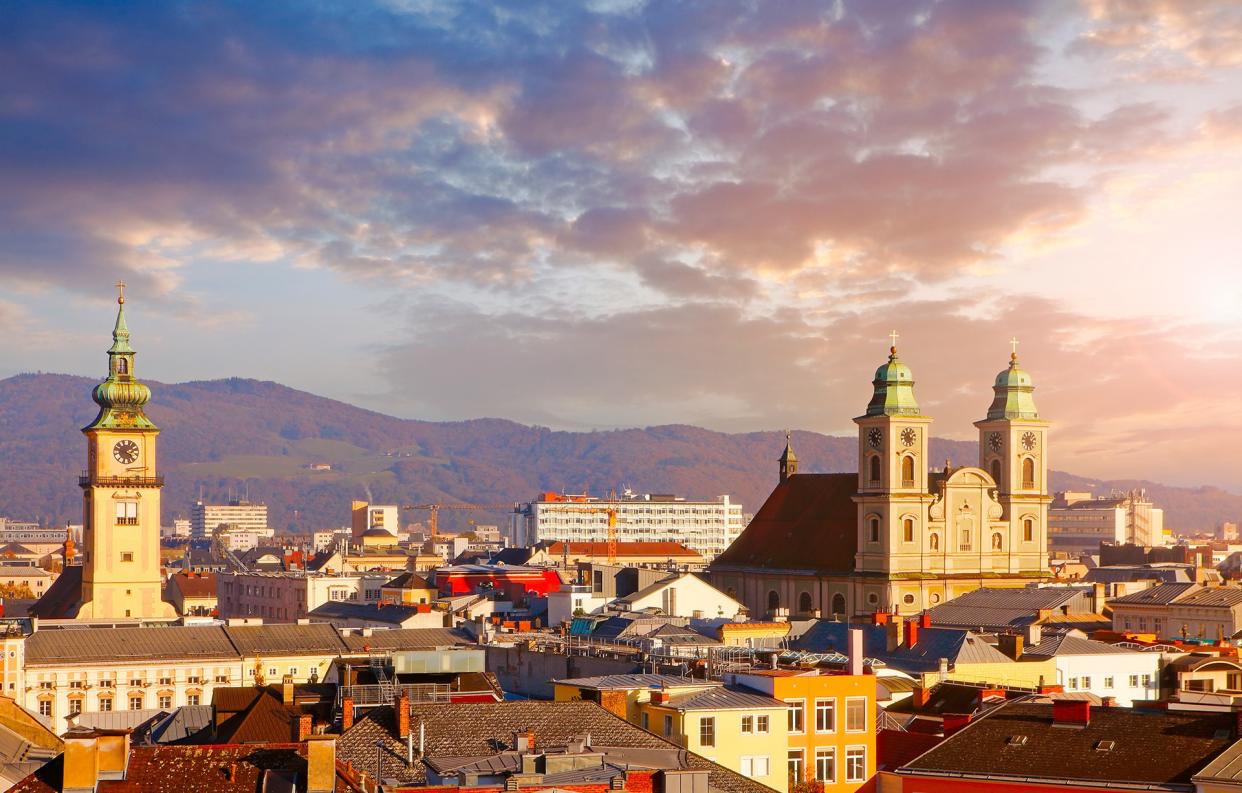
Why go?
Linz, a former European Capital of Culture spliced by the Danube, is dominated by its steel industry yet entertains with quirky character.
here are exciting exhibitions, a world-class musical heritage and standout museums within startling architecture. It also lays claim to the one of the oldest cake recipes in the world.
Location
There are 10 moorings, all centrally located. Most ships dock by Donaupark on the right bank of the Danube, steps from the Brucknerhaus concert hall – named after Linz-born composer Anton Bruckner – and Lentos Art Museum. It is around 15 minutes’ walk via grasshopper-green parkland to Hauptplatz, the main square.
Can I walk to any places of interest?
From Hauptplatz, must-see sights, including the Pöstlingberg mountain tram, Linz Castle and the colourful tangle of medieval and renaissance townhouses in the old town are steps away. It’s easy to walk to Mozarthaus, where Mozart composed his Linz symphony in 1783.
Getting around
Linz has an excellent bus and tram network, though services are more infrequent in the evenings. A 24-hour ticket for the center zone costs €4.50/£3.95 and must be purchased before boarding at pavement ticket machines or the train station.
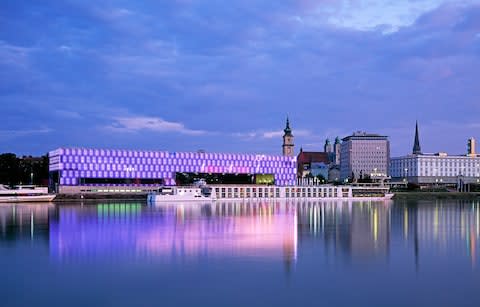
What to see and do
What can I do in four hours or less?
Strolling is the best way to soak up the city. Start at Hauptplatz, which features a 20-metre (65.6ft) column of white marble built in 18th century, has an excellent Saturday flea market and is a good spot for watching the world go by.
There, hop on the historic Pöstlingberg tram, Europe’s steepest adhesion railway: it’s 20 minutes to the wooded summit, where you’ll find Linz’s regal white basilica (illuminated to spectacular effect at night) and panoramas of the working city’s chimneys and spires.
Back in the centre, follow Hofgasse towards the 17th-century castle and continue via Herrengasse to Mariendom, the largest church in Austria. The early 20th-century build features 42 intricate Tirolean glass windows and is around 440ft high.
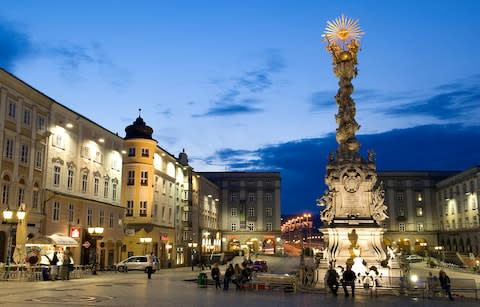
What can I do in eight hours or less?
A Unesco City of Media Arts and the European Capital of Culture 2009, Linz is interesting and kooky, with a something-for-everyone collection of museums. A must-visit is the riverside “museum of the future” Ars Electronica, a structure like a giant crystal where you can control robots or clone plants.
On the opposite bank of the Danube, the equally startling Lentos Art Museum houses 11 decades of modern art by masters including Klimt, Schiele and Kokoschka. History comes to life at the Castle Museum: among modern glass architecture and 17th-century stonework are objects including a fortepiano owned by Ludwig van Beethoven and scary weaponry used in the Middle Ages, as well as displays relating to the Nazi era (Hitler was born in Linz).
Nowadays, the city is dominated by the steel industry in the south, and a captivating place to find out more about the latest production processes is Voestalpine Stahlwelt. Make time for the multimedia bus tour into the heart of the steel plant.
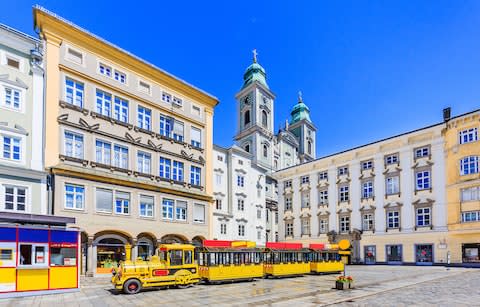
What can I do with a bit longer?
By night, admire the illuminated skyline of the Ars Electronica Center and Lentos Art Museum, then attend a concert at the Landestheater, which is dubbed Europe’s most modern opera house thanks to its clear acoustics and state-of-the-art stagecraft. Longer stays warrant a day trip to Salzburg or Vienna, both around one and a half hours away by train.
Eat and drink
Cuisine in Linz is traditionally Austrian, with fare like Wiener Schnitzel, Kaiserschmarrn (sugary shredded pancake) and Schweinsbraten (roasted pork) on most menus. For straight-up local, try Leberkaesesemmel, a crusty white bread roll filled with meatloaf.
The city’s most famous creation is Linzer Torte, a hazelnut flan filled with cranberry jam that is reported to be based on the oldest cake recipe in the world. German and Austrian beers are popular, as is Most (Austrian cider).

Don’t leave Linz without…
Linz has a fantastic slow fashion scene, comprising of local design pieces and handmade organic items. The best places to rummage are Kleider Machen Leute on Herrenstrasse and Kaysoo on Coulinstrasse.
Need to know
Flight times
Flights to Linz from London take around two hours.
Safety
Linz is safe to explore alone due to low crime levels.
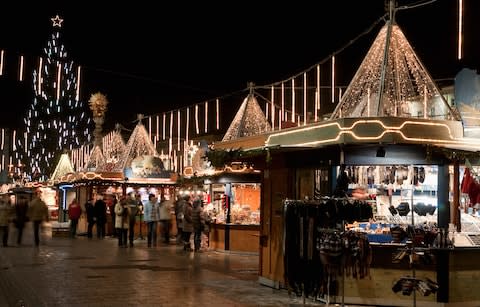
Best time to go
Summer is lovely – temperatures typically reach the high 20s and locals spill into the riverside parks. The city also bustles with life during the Christmas markets, one of which features a nativity scene crafted in steel.
Closures
Most shops and cafes close on Sundays; museums on Mondays.
Save money
The Linz Card, which costs €18/£15.67 euros for a day, includes public transport in the city centre and entrance to many major attractions. It also offers small discounts on tours.


